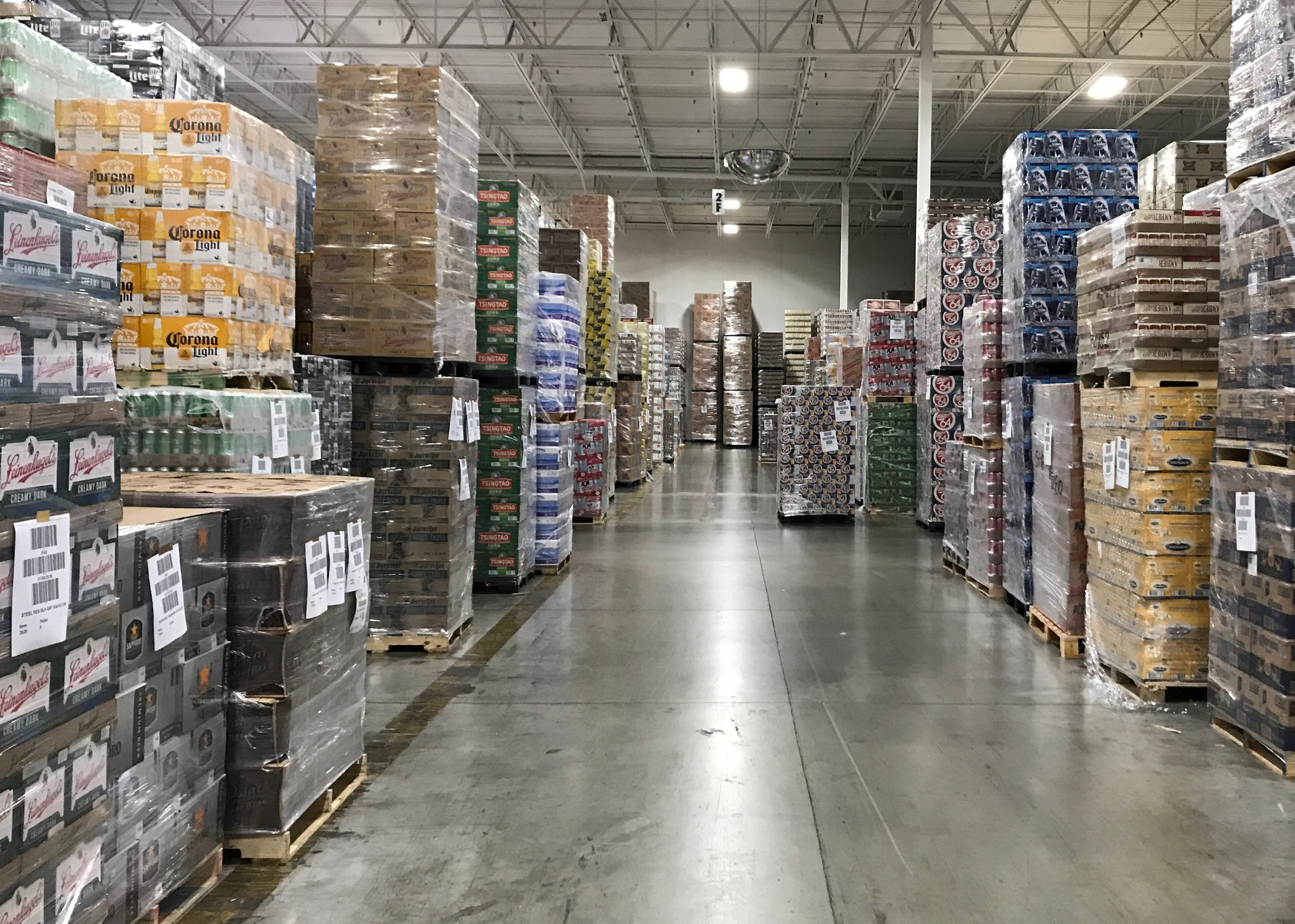The number of active individual beer items sold at U.S. retailers is in decline, suggesting that the beer industry may be post-peak in the era of fragmentation.
The number of beer SKUs, or stock-keeping units, has been in decline since February and “will continue to trend down, until higher performers are left that are generating more sales (and) profits for distributors (and) retailers,” Brett Cooper, an analyst with Consumer Edge Research, said in a report released this week.
Total active SKUs in beer dipped below 12,000 in February and have continued to decline throughout the year, per Cooper’s analysis of IRI data through July 29. The decline comes after at least five years of consistent growth of beer SKUs, driven primarily by the explosion of craft.
SKUs slipped briefly into decline in 2017 before ticking up again in January, reaching a new peak, Cooper’s analysis shows. But since then, it’s been all downhill, with the active number of beer SKUs down low single digits, approaching mid-single digits, Cooper says in the report.
Craft leads SKU decline
The decline, he says in the report, is led by a “rationalization” in the craft segment, which comprises the vast majority of beer SKUs, at just short of 8,000. The decline in SKUs for craft “is running ahead of that which we see in the beer industry in general.”
Cooper’s data is backed up with a MillerCoors analysis of Nielsen data, which show the number of total beer SKUs have declined 2.3 percent over the 52-week period ended August 11. The decline has been fueled in large part by craft singles, which are down 8.5 percent, or more than 500 SKUs, over that period. Import singles also dipped, shedding 126 SKUs to fall 10.3 percent.
Those losses were partially offset by growth in craft 4-packs and 6-packs, which combined to tack on 227 SKUs over the 52 weeks, the data show.
“All signs point to more competitive times ahead” for the craft segment, Beer Marketer’s Insights wrote in a recent report (subscription required). Craft brewers, the publication wrote, will have to contend “with more players vying for less total SKUs at retail, and potentially fewer shelf spaces.”
Still, among the top 10 brand families to increase SKUs, nine were crafts, including some of the largest players: Founders, Boulevard, Constellation Brands-owned Ballast Point and three Anheuser-Busch-owned brands — Goose Island, Karbach and 10 Barrel.
Of the top U.S. brewers, Constellation (+12.3 percent), Anheuser-Busch (+2.2 percent), Heineken USA (+4 percent), Pabst (+3.2 percent) and Diageo (+0.6 percent) increased their number of beer SKUs over the period. Meanwhile, MillerCoors (-2.6 percent), Boston Beer (-9.4 percent), North American Breweries (-3.7 percent) and Mike’s Hard (-2.1 percent) shed SKUs, the Nielsen data show.
The slight decline for MillerCoors reflects “prudent decisions to reduce complexity and redundancy,” particularly for the company’s independent distributors, says Turiya Luzadder, director of shopper insights at MillerCoors. Simplifying assortments is crucial, especially as the company develops and rolls out innovations, she says.
SKU proliferation hurts productivity
The decline in SKUs comes amid broad agreement across the industry that an overabundance of SKUs is hurting sales and productivity. And items that don’t move as quickly should be culled by segment to make way for more-productive sellers.
Beer industry dollar sales per SKU declined in each year from 2014 to 2017, per Cooper’s report. In 2014, sales per active SKU stood at $2,765. By 2017, the figure had fallen to $2,180.
The least-productive SKUs, by far, were craft. Sales dollars per craft SKU in 2017 were $329, down from $377 in 2014, per Cooper’s analysis of IRI data.
The most productive? Mainstream beers, which rose to $15,799 per SKU in 2017, up from $15,048 in 2014.
The disparity between the two underscores the importance of a balanced approach to managing beer retail shelf sets, Luzadder says. Retailers must consider who is buying specific items and why when they consider which SKUs to cut, and which to carry. By focusing on the customer first, she says, retailers ensure valuable shoppers are retained and new shoppers are brought into the category.
“We know the right assortment matters, but that does not mean endless variety,” she says. “All too often the beer aisle can be complex and confusing, creating anxiety and frustration for shoppers. Navigational tools are sparse and leave shoppers disappointed and unsure where to begin.”
Beer shoppers, Luzadder says, “are craving some level of curation in the beer aisle to find the brands that meet the needs of the occasion for which they are shopping.” Helping retailers facilitate simple navigation of their beer aisles represents a “huge opportunity for beer.”

